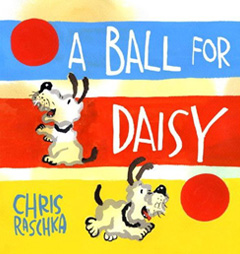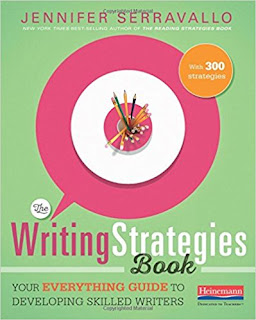Welcome to day 3 of Writing Week 2020! I hope you're enjoying a peek into how I teach writing in the primary grades. Today is all about strategies for improving writing with emergent writers. One of the amazing parts of writer's workshop is that it's naturally differentiated, but that's also one of the scariest parts of writers workshop. Having an equipped and full toolbelt of strategies for helping your young authors is necessary for their individual needs. I wear my toolbelt during writer's workshop Writing and Conferences time as I travel around the classroom.
I keep many tools inside of it to help my writers as I see what each one needs to become a stronger writer.
Let's take a look at some tools (and toys) I use to help stretch all the writers in my classroom.
Play-Doh is a perfect tool to use when introducing how to start a new story. Have students open their Play-Doh and observe what they see. You will get answers describing one color, a "blob shape", or my favorite - "It looks like Play-Doh." Then show a blank piece of paper and tell students that writing a story is just like playing with Play-Doh. It starts out as just a white, rectangular shaped piece of paper, but when we add our thinking and creativity to it we can turn it into something. Then allow students to turn their Play-Doh into something. I like to have my students use Seesaw to take a photo of their Play-Doh creation and record what they made as a reference later in writers workshop for each student to reflect and remember authors start with nothing and turn it into something, just like we did with the Play-Doh. This is a great tool to use to help timid writers just start writing. Always remember that in kindergarten and first grade, writing can start with pictures. If you have an apprehensive writer in the beginning, let them start with pictures, then move into labeling, then words. (Click the photo to grab my 3 Ways to Write FREEBIE.)
Isn't it awesome that writing is naturally differentiated?!?!
I also love these two books for mentor texts with helping apprehensive writers.
A Ball for Daisy is a wordless book, yet it tells a story about Daisy and her ball. It shows young writers that our pictures hold meaning, so starting with pictures is okay.
Isn't it awesome that writing is naturally differentiated?!?!
I also love these two books for mentor texts with helping apprehensive writers.
A Ball for Daisy is a wordless book, yet it tells a story about Daisy and her ball. It shows young writers that our pictures hold meaning, so starting with pictures is okay.
The Dot is a great book about making a mark that can turn into so many creative things, just like we do in writing. We just have to start!
One tool that I use as a visual model for my authors is this stacking toy. It helps writers see that they need to make sure their story is told in the correct order to help it make sense. I know that seems so simple for us, but for emergent writers they really do need to understand beginning, middle, and end. This is a skill we are working on during reading ALL THE TIME, but making it translate into writing can be hard at times. Using this visual helps tremendously. For writers who are already skilled at making their story flow, this tool can be used during revising in the writing process. Sometimes we need to rearrange parts of our stories to help them make more sense to our readers. During revising you can see my class literally cutting their stories apart and rearranging them to make them clearer, just like with this toy, we can rearrange it to make it "right".
Mr. Potato Head is a wonderful visual for showing why details are important in writing. Start with the body of Mr. Potato Head and ask students what it is. They will probably know it's a Mr. Potato Head. Ask students to describe Mr. Potato Head and they won't have much to say apart from brown and oval shaped. Start adding pieces one by one, having students describe what they see. As you add each part, Mr. Potato Head becomes more interesting. These pieces are like the details we add in our writing. Details help make stories more interesting and fun to read. Here's an anchor chart I made to help my students remember all the details writers can add to make their stories better.
I keep Mr. Potato Head near writing area to remind my students to add those details during writing and, of course, I wear my costume on the day I introduce him.
Thank you, Target, for your fun costumes!
Let's Go Fishing is a fun toy to use to help students understand adding hooks into their writing. Hooks are great details that engage a reader immediately. I have enough sets of these for students to play in groups of 4. After playing for about ten minutes, we regroup for writers workshop and I ask students how they caught the fish. They know they used a fishing pole. Then we talk about how fishing poles have a hook to catch a fish. You can't catch a fish without one. I then explain that authors use hooks, too, to catch their reader's attention. Some hooks we can use in writing are asking questions or starting with an exclamation.
Legos or Unifix cubes can be used to help writers visually see the we need a beginning (green), a long, detailed middle (several yellow blocks depending on the level of your writer), and an ending (red). Helping young authors see that most of the story is included in the middle is important for remembering to add details and stretch it out. We call this elaborating. I also use this song to the tune of "Tell Me More" from Grease:
Tell me more, tell me more
I don't think I can wait.
Tell me more, tell me more
Will you elaborate?
Uh-huh, uh-huh,
Let's elaborate
Uh-huh, uh-huh,
Let's elaborate
Many of these ideas can be added to your student's Writer's Tool Boxes in miniature form. I found many mini versions on Amazon, but just having visual cards helps too. Click the image below to grab the cards. You can keep them in your toolbox or put them on a ring and add them to student's boxes.
What else is in my toolbelt? Let's take a look!
This 7 minute video explains everything I carry around with me for writing conferences.
This 7 minute video explains everything I carry around with me for writing conferences.
I hope these strategies help make writing more fun and engaging for your students and YOU!
Also, this book is amazing for strategies for all ages.






















































This comment has been removed by a blog administrator.
ReplyDeleteHi, Erica! I found here very helpful ideas for me! Thank you for this post! You can read my post, if you need to know how to make writing process easier. Good luck!
ReplyDeleteGood article keep sharing this type information.talk to astrologer online for your good life.
ReplyDeletebest astrologer in india
talk to astrologer online
online astrologer talk
This article is very helpful.thanks for sharing. consult acharya mukti team for your life problems.
ReplyDeletebest astrologer in India
This site is very interesting. and usefull thanks sharing for this article. best astrologer in india consult acharya mukti team about your carrier.
ReplyDeletetalk to best astrologer in india
Astrologer near me
astrologer chat
Nice blog thanks for sharing. Not able to make the right decision for your life..? Are you struggling to get the right direction..? consult acharya mukti team.
ReplyDeleteastrologer near me
Nice article thanks for this information. Consult best astrologer in india.
ReplyDeletetop astrologer near me
Such an amazing post, injoy read this article.Consult best astrologer in india.
ReplyDeleteNumerology 2021
Numerology predictions 2021
This blog is very informative. thanks for sharing. acharya mukti ji and team comes under india’s best astrologers.
ReplyDeletetalk to an astrologer
This blog is very informative. thanks for sharing. acharya mukti ji and team comes under india’s best astrologers.
ReplyDeletetalk to best astrologer in india
holi 2021
Good article keep sharing this type information.talk to astrologer online for your good life.
ReplyDeletetop astrologer in nepal
famous astrologer in nepal
very important information. call center solutions for better results.
ReplyDeleteMy perspective on the subject has been greatly expanded by the information presented in this post, and I am eager to use some of these tactics in my own work. Thank you for sharing such insightful content!
ReplyDeletePeacocktv.com/tv
mcafee.com/activate
ifrogot.apple.com